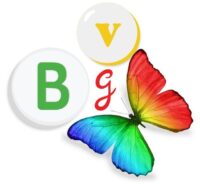Artificial Intelligence (AI) has rapidly transformed numerous industries, and the world of art and illustration is not an exception. From generating stunning visuals to assisting artists in refining their work, AI-powered tools are redefining creativity in amazing way. Whether you’re a professional illustrator, a digital artist, or just an enthusiast, AI offers groundbreaking possibilities—but it also raises important questions about originality, ethics, and the future of human artistry.
How AI is Changing Art & Illustration
1. AI-Generated Art: From Text to Masterpiece
AI tools like DALL·E 3, MidJourney, and Stable Diffusion can create intricate illustrations, paintings, and digital artworks based on simple text prompts. These models analyze vast datasets of existing art to generate unique pieces in seconds, mimicking styles ranging from Renaissance paintings to futuristic punks.
Example: An artist types “a mystical forest with glowing butterflies, digital painting, fantasy style”—and AI produces a high-quality illustration in minutes.
Use Case: Concept artists, game designers, and marketers use AI to quickly visualize ideas without starting from scratch.
2. AI as a Collaborative Tool for Artists
Rather than replacing human artists, AI often serves as a co-creator, helping with:
Sketch Refinement – Tools like Adobe Firefly enhance rough drafts into polished illustrations.
Style Transfer – Apps like DeepArt apply Van Gogh or Picasso-like styles to user-uploaded images.
Automated Coloring – AI can suggest color palettes or even fill in line art automatically (e.g., Style2Paints).
3. Customizable & Adaptive Artwork
AI allows for dynamic art generation, where illustrations can be modified in real-time based on user input. For example:
NFT Art – AI generates endless variations of a base design for digital collectibles.
Personalized Illustrations – Apps create custom avatars, portraits, or storybook characters tailored to user preferences.
The Benefits of AI in Art & Illustration
✅ Speed & Efficiency – Reduces time spent on repetitive tasks like background rendering.
✅ Accessibility – Allows non-artists to create professional-grade visuals.
✅ Experimentation – Enables artists to explore new styles without extensive training.
✅ Cost-Effectiveness – Cuts down on hiring costs for concept art and prototyping.
Controversies & Ethical Concerns
Despite its advantages, AI-generated art faces criticism:
Originality & Copyright – Who owns AI-created art? Can AI models trained on copyrighted works legally generate new art?
Job Displacement – Will AI replace human illustrators, or will it simply become another tool in their arsenal?
Over-Saturation – With AI making art creation effortless, will the market be flooded with low-effort content?
The Future of AI in Art
AI is not here to replace artists but to augment human creativity. The future may see:
Hybrid Art – More collaborations between AI and human artists.
Advanced Customization – AI that learns an artist’s personal style to assist in their workflow.
Ethical Frameworks – Clearer regulations on AI training data and copyright.
AI is undeniably reshaping the art and illustration landscape, offering both exciting opportunities and complex challenges. While it streamlines workflows and democratizes creativity, the essence of human artistry—emotion, intention, and originality—remains irreplaceable. The key lies in embracing AI as a powerful ally rather than a rival, ensuring that technology enhances—not diminishes—the value of human expression.
